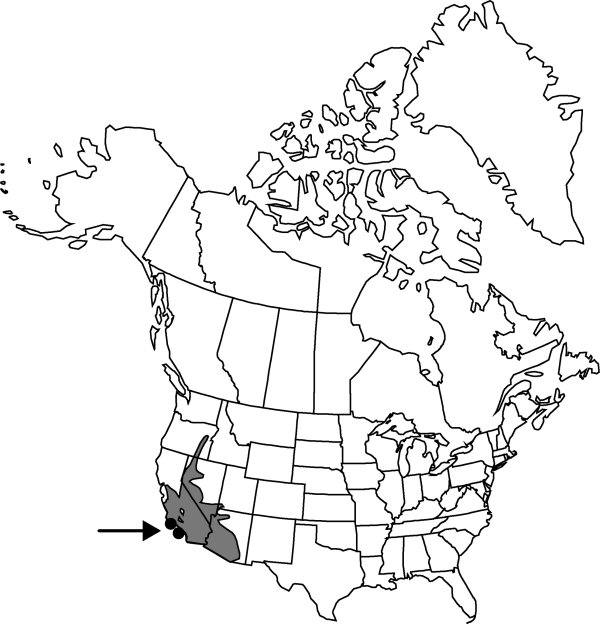Mirabilis laevis
Proc. Calif. Acad. Sci., ser. 2, 1: 235. 1888.
Stems decumbent to erect, few and clambering through other vegetation to many, and then usually forming densely leafy and compact clumps, 1.5–15 dm, herbaceous, suffrutescent, or woody basally, glabrous, scabrous, puberulent, or villous, often glandular. Leaves spreading; petiole 0.1–2.2 cm; blade ovate, deltate-ovate, ovate-rhombic, subreniform, 1–4 (–5.5) × 0.5–3.5 (–5) cm, fleshy to slightly succulent, base cordate, truncate, or broadly obtuse, apex acute, obtuse, or rounded, surfaces glabrous, scabrous, puberulent, or villous, often glandular. Inflorescences widely cymose, or ± thyrsoid, involucres clustered, and nearly sessile at ends of branches, or solitary in axils on peduncles 3–12 mm; involucres 3–7 mm, lobes narrowly to broadly triangular, or triangular-lanceolate, base 30–50% of height. Flowers 1 (–2) per involucre; perianth white, pink, or shades of purple, 1–1.6 cm. Fruits gray, dark-brown, or nearly black, often mottled with dark-brown or black, with or without 10 pale, diffuse lines, ovoid, obovoid, or nearly spheric, 3–5.5 mm, smooth or moderately rugose.
Distribution

Ariz., Calif., Nev., Oreg., Utah, nw Mexico
Discussion
Varieties 4 (3 in the flora).
Mirabilis laevis is a complex of poorly differentiated forms that differ to a greater or lesser extent primarily by perianth color, pubescence, and habit, characteristics that show imperfect geographic consistency. In general, white-flowered plants occur in arid areas east of the southern California mountains, and magenta-flowered plants occur west of the mountains; in the arid regions viscid-pubescent plants occur to the south, less viscid plants to the north. Sympatry and intergradation are frequent in the southern Sierra Nevada, southward along the east side of the southern California mountains, and on the northern portion of the peninsula of Baja California. The variety laevis, which is glabrous or glabrate, is restricted to the immediate coast and islands in the vicinity of Bahía Magdalena in Baja California Sur.
Selected References
None.
Lower Taxa
Key
| 1 | Perianth usually pink, lavender, or magenta, rarely white; lobes of involucre ovate or ovate-oblong, base of lobes 50-70% of their height; pubescence usually not notably viscid or retrorse (but stout curved hairs occur on plants along coast); inflorescences often narrow, ± thyrselike | Mirabilis laevis var. crassifolia |
| 1 | Perianth usually white, rarely pale pink or purplish; lobes of involucre often narrowly triangular, base of lobes 60-100% of their height; pubescence commonly viscid-puberulent, viscid-villous, or sparsely short pubescent with retrorse hairs; inflorescences usually broad, cymose | > 2 |
| 2 | Plants viscid-puberulent to viscid-villous | Mirabilis laevis var. villosa |
| 2 | Plants retrorse-puberulent | Mirabilis laevis var. retrorsa |
"dm" is not declared as a valid unit of measurement for this property.